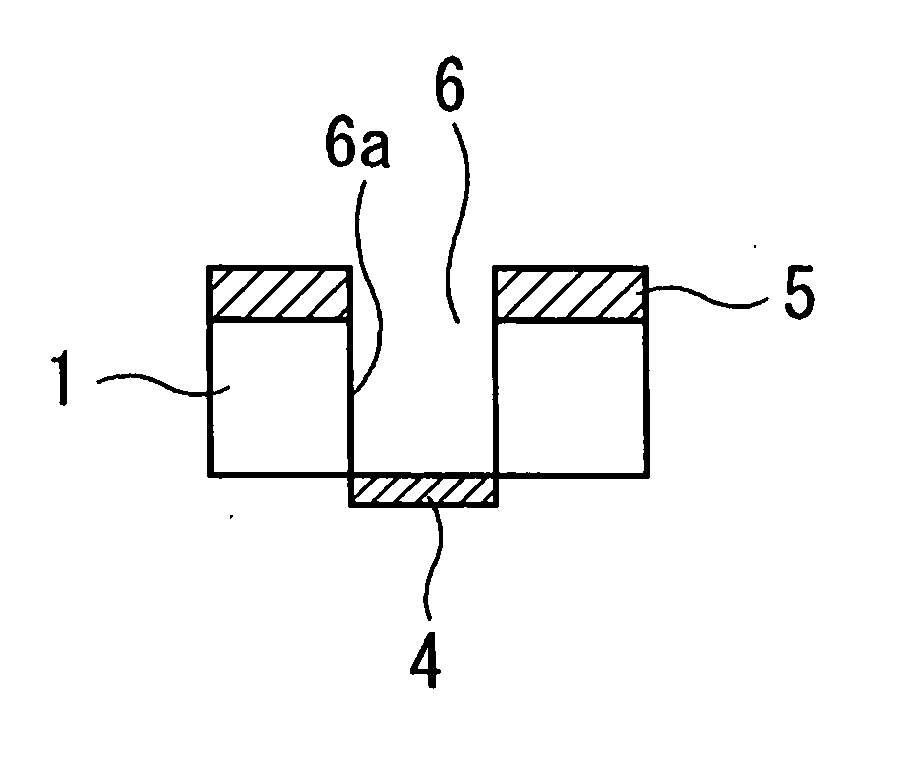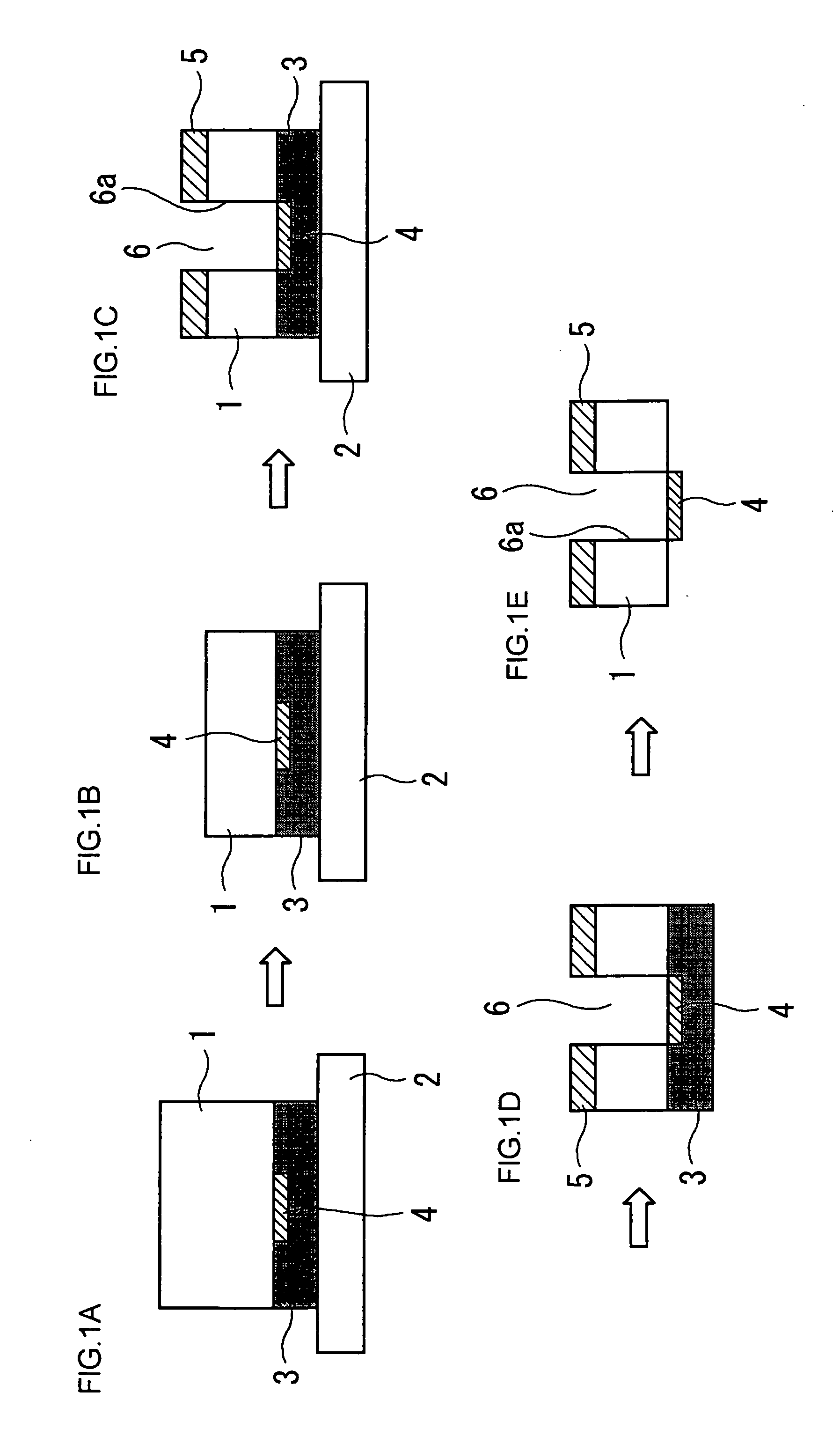Method for manufacturing a compound semiconductor device having an improved via hole
a semiconductor device and via hole technology, applied in the direction of semiconductor devices, basic electric elements, electrical equipment, etc., can solve the problems of reducing the thickness of the wafer, forming a tapered via hole, and reducing the etching rate, so as to achieve no softening point, increase the etching rate, and high softening point
- Summary
- Abstract
- Description
- Claims
- Application Information
AI Technical Summary
Benefits of technology
Problems solved by technology
Method used
Image
Examples
first embodiment
[0014]FIGS. 1A to 1E show cross-sectional views schematically illustrating a via hole forming process employed by a method for manufacturing a compound semiconductor device according to a first embodiment of the present invention. Specifically, FIGS. 1A to 1E show the sequential process steps of the via hole forming process. Referring to the figure, reference numeral 1 denotes a SiC wafer formed of single-crystal SiC, i.e., a substrate material for the compound semiconductor device; 2, a support substrate made up of a GaAs wafer and used to hold the SiC wafer 1; 3, an adhesive for bonding the SiC wafer 1 to the support substrate 2; 4, an electrode of gold (Au) deposited on a predetermined region of the principal surface of the SiC wafer 1 (or the undersurface of the SiC wafer 1 in the figures); 5, a Ni layer provided on predetermined regions on the rear side of the SiC wafer 1; 6, a via hole; and 6a, sidewalls of the via hole. It should be noted that according to the present embodim...
PUM
 Login to View More
Login to View More Abstract
Description
Claims
Application Information
 Login to View More
Login to View More - R&D
- Intellectual Property
- Life Sciences
- Materials
- Tech Scout
- Unparalleled Data Quality
- Higher Quality Content
- 60% Fewer Hallucinations
Browse by: Latest US Patents, China's latest patents, Technical Efficacy Thesaurus, Application Domain, Technology Topic, Popular Technical Reports.
© 2025 PatSnap. All rights reserved.Legal|Privacy policy|Modern Slavery Act Transparency Statement|Sitemap|About US| Contact US: help@patsnap.com


